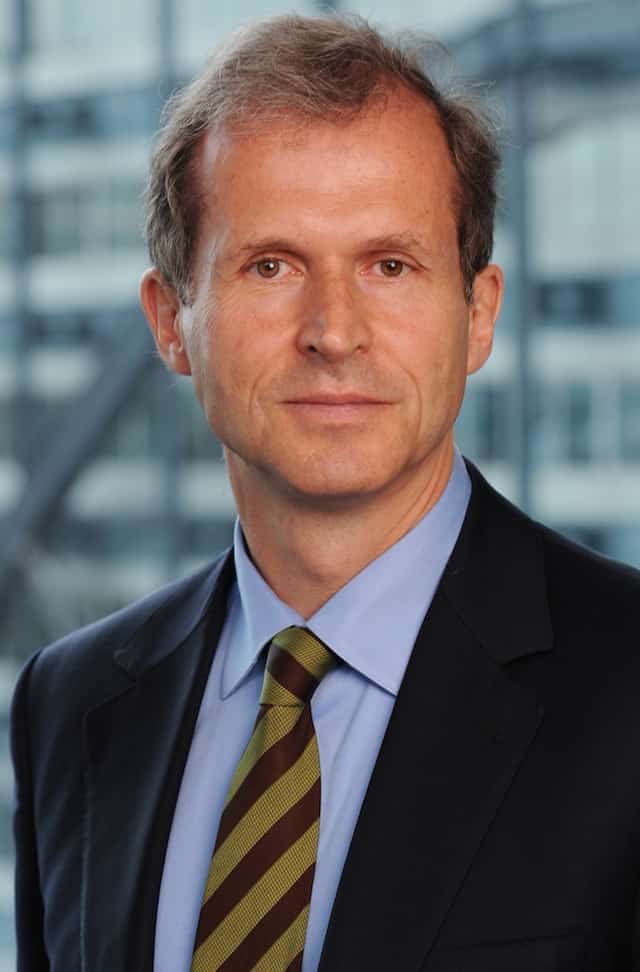Central & Eastern Europe | Emerging Markets Regional Review

Central and Eastern Europe has come a long way in the past 25 years, but the region must overcome some significant obstacles in 2015—particularly as Russia’s conflict with Ukraine continues.
When former Polish president and Solidarity Party leader Lech Walesa walked through a vast new shopping center in Warsaw recently, he was quoted as admitting that he could never have imagined such things when Poland took its first steps toward a free market.
For those who have followed the transformation of emerging Europe over the 25 years since the fall of the Berlin Wall, it is hard not to share Walesa’s sense of wonder. Although aggregate real GDP across the region (including Central Europe and the Baltics, southeastern Europe, Russia and Ukraine) is now just 25% higher than in 1989 (a rise of 1% a year), growth has varied significantly between individual countries.
Poland, which has undertaken the most ambitious and far-reaching reforms, has experienced average annual GDP growth of 3.3%, more than doubling its GDP. The other CE countries have also grown much wealthier. According to Capital Economics, a London-based consultancy, per capita GDP at purchasing power parity (PPP) increased from $7,500 in 1989 to over $20,000 today.
By contrast, Russia and Ukraine—which remain constrained by corruption, poor allocation of resources and continuing state interference in the economy—have underperformed. In Russia real GDP has increased just 15% since 1989, and in Ukraine it has fallen by 30%. Capital Economics concludes that “countries that combined economic with institutional reform have prospered most.”
Romania is a recovery story, with GDP expected to grow by around 2.4% in 2015, fueled by one of the region’s last privatization programs: The IPO of energy company Electrica was Romania’s biggest, raising $605 million on the London Stock Exchange in July.
The region prepares to enter 2015—and its second quarter-century of reform. How do prospects look? The last Global Finance CE survey in September 2014 was positive, with Poland, the Czech Republic and Slovakia, the Baltics and even Hungary expected to see GDP grow quite strongly over 2014 and into 2015. The outlook has shifted, however, in the months since then. “Our biggest concern remains the region’s vulnerability to a slowdown in Chinese growth, with this impacting on demand for German goods, for which the CE countries are key suppliers,” says Attila Gyurscik, leading analyst at Concorde Securities in Budapest.
Even without this vulnerability, eurozone growth, which had seemed solid earlier in 2014, is now forecast to be only 0.8%. This comes amid worrying signs that Germany, CE’s main trading partner, is faltering and Italy, a key trading partner for southeastern Europe, is slipping back into recession.
Making matters worse are growing fears over the economic fallout of the Russia-Ukraine dispute. As Global Finance went to press, this dispute showed little sign of easing. The impact on Ukraine has already been considerable, with the European Bank for Reconstruction and Development (EBRD) expecting that the country’s GDP this year will contract by more than 10%.
The conflict is also having an impact on Russia: The EBRD has barred new investment, while capital flight is expected to top $100 billion this year. The budget is coming under strain as investor fears, a falling ruble (foreign exchange is being hoarded), a falling oil price and the legacy of successive years of failure to modernize and diversify the economy suggest a degenerating environment. Over the first week of November, in a possible foretaste of things to come, the ruble depreciated more than 8%, giving rise to suggestions of a full-scale currency crisis for a currency that has lost a quarter of its value since the beginning of the year.
“Russia’s budget is predicated on oil at $100 a barrel—every $10 [the price falls] below that means 0.6% less GDP growth, whilst the impact on the budget is even stronger,” argues Erik Berglöf, chief economist at the EBRD in London, who says the central bank remains under considerable pressure. And that’s before the cost of sanctions is factored in.
“The financial sanctions imposed by the West are impacting severely on capital and credit flows to Russian banks and companies and are aggravating the recession Russia is going into,” says Christopher Granville, Russia analyst, founding partner and managing director at consultancy Trusted Sources, who believes Russia will be in trouble if the oil price drops and stays below the $80 level for any serious period of time. Even if it doesn’t, the ban on technology exports to Russian energy companies will impact the hydrocarbon industry’s development in some five to ten years’ time, suggesting sanctions could have serious long-term effects.
REGIONAL TIES

So what impact might Ukraine and Russia’s economic problems have on their CE neighbors? Links are, of course, weaker than in the days of the Council for Mutual Economic Assistance (Comecon), but nonetheless banks and entities that do substantial business with Russia and Ukraine will feel the bite. These include Polish farmers (already affected by Moscow’s retaliation against European Union sanctions), Hungary’s pharmaceutical giant Gedeon Richter (35% of sales come from these two countries), Hungary’s OTP Bank (which has subsidiaries in Ukraine and Russia) and auto manufacturers in the Czech and Slovak Republics, for which the Russian market is now closed. “The impact of the Russia-Ukraine crisis on the region won’t be fatal, but it will aggravate an already tricky economic situation,” says Granville.
Meanwhile, Hungary’s banking sector is preparing for major disruption as banks prepare to repay large sums authorities say were unfairly taken from customers who had obtained foreign currency loans ahead of the depreciation of the Hungarian forint in 2008. Some $3 billion—or around one-third of the country’s bank capital—will have to be repaid early next year, and the government has made no secret of its desire to see more banks under its ownership. The July sale of MKB Bank by Germany’s Bayerische Landesbank to the state confirms the process is already under way. Observers anticipate more major changes, with some smaller banks going under. “Some sort of consolidation is inevitable,” agrees Concorde’s Gyurscik. Many observers are concerned that Hungary’s government is jeopardizing the country’s future by flirting with the idea of creating an “illiberal state based on national foundation,” as described by prime minister Viktor Orbán during a recent speech, more akin to Russia and Turkey than the Central Europe of which Hungary is an integral part.
Going forward, Capital Economics argues that the two-speed growth pattern seen over the past quarter-century, with CE outperforming Russia and other former Soviet republics, looks set to continue in the absence of serious political, economic and institutional reform in the latter. A glance over the past 25 years and a look at the region today suggests that the key to successful transition is the existence of efficient, impartial institutions that can enable and oversee the proper functioning of the free market—as evidenced by the successful, diversified economies of Poland, the Czech Republic, Estonia and Slovakia.
“If this region wants to close the gap with Western Europe, it needs to reenergize the process of structural reform: governance, infrastructure management, competition strategy,” argues Berglöf of the EBRD. “These are often tricky to get right, but they really are key to sustained future prosperity.”



